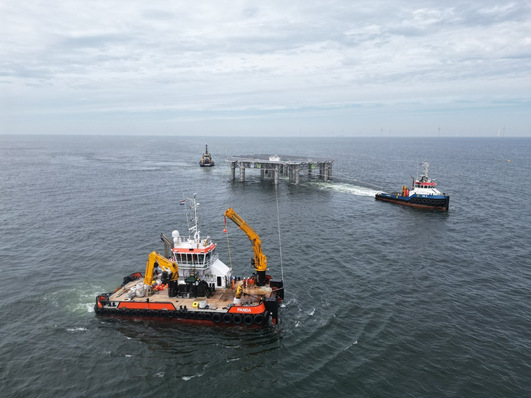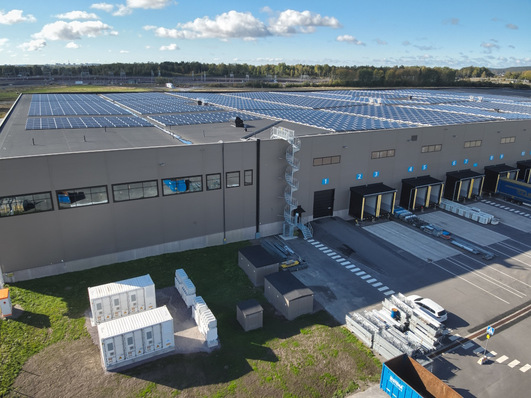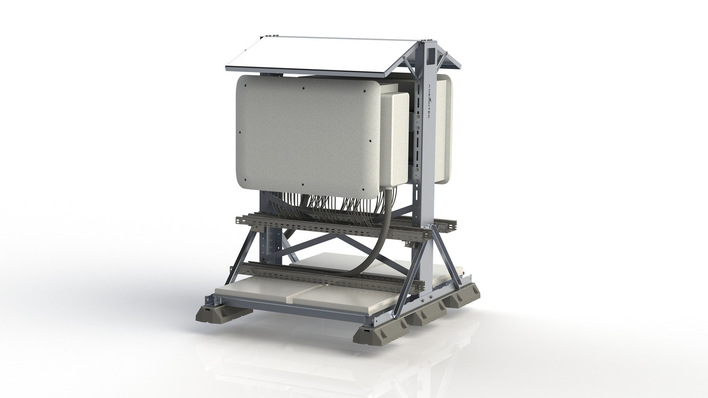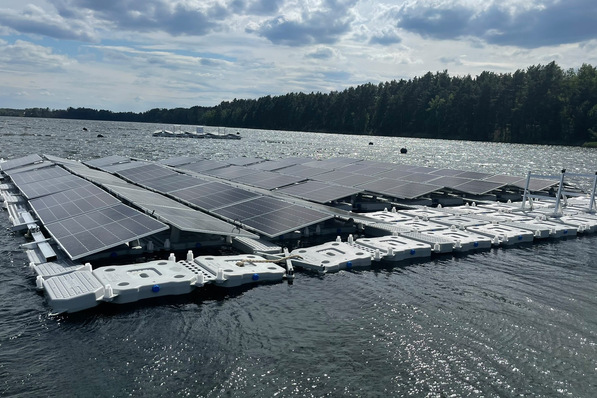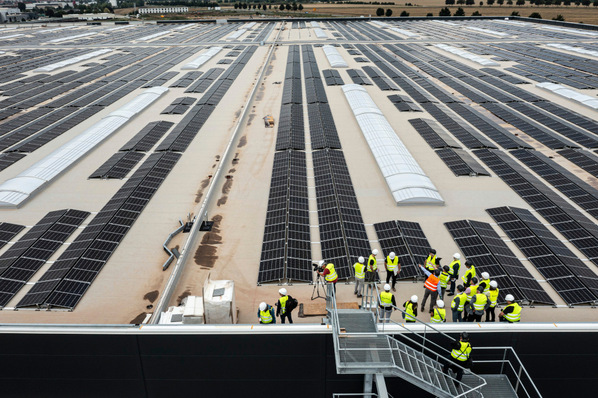The special film from Solaxess has not even been on the market that long. Now there is a further development. What problems do you solve with it?
Peter Röthlisberger: We had originally developed a nice solution for architects. But it is also quite price-intensive. The module manufacturer had to apply our film in a composite of four layers. This consists of the solar film, two encapsulation films and an ETFE film as the top layer. This makes production very demanding. In addition, a gap of five millimetres from the edge of the module is necessary. So far, this free area has had to be printed if the module is frameless.
Why do you need this gap?
The first version of the Solaxess film could not reach the edge of the module because we did not want to have direct contact with the surroundings. This will change with the new version. Then the module producer can cover the entire module with the film. It is also much easier to use because only two layers are now applied.
The version will then consist of fewer than four layers?
Exactly. Together with the CSEM researchers, we have developed a new version that only consists of two layers, the actual Solaxess film and an ETFE layer. The manufacturer no longer needs to apply the new film to the top side of the module, but can also laminate it under glass. This eliminates the need for the two encapsulation films.
What does this solution actually look like?
In the first step, it will be an additional glass that the manufacturer applies to the actual module. But in the future he will also be able to integrate our foil directly into the module. Then the ETFE can also be omitted. This will make production easier and less expensive. So with our solution, there will be different module surfaces - depending on the needs and demands of the customer: Glass or ETFE.
Will the current version with the four layers still be available?
At the moment it will still be available. Customers will then be able to choose whether they want a module surface made of matt and easy-to-clean ETFE or whether they prefer the smoother glass variant. As soon as we have obtained the certifications for the second variant, it is quite possible that we will stop production of the first variant. This is because it is optically softer due to the ETFE film compared to glass. But it is more complicated to handle and therefore more expensive.
See also:
Buildings in Uppsala fitted with white solar facades
By how much will the price of a white module drop?
The price of our solution is reduced by about two thirds with the new variant. This puts us in the same range as the printed modules. This is because a full-surface print costs between 30 and 60 euros per square metre, depending on which colour is used and how thick the print is. Since our approach is that solar technology is no longer visible, a very thick print would be necessary. With our new variant, we are able to undercut this price. In addition, the modules printed so thickly lose 70 or sometimes even 90 per cent of their output. With our film, the power loss for white modules is between 40 and 45 per cent. With grey and darker colours, even more power remains. For terracotta-coloured modules, the loss is a modest 20 to 30 per cent.
But printing allows more flexibility in terms of colouring?
We will not only offer film for white modules, but in future we will also produce darker colours. We will be able to reproduce practically any desired colour. Initially, there will be grey tones and brick-coloured films in addition to white - in each case without the solar cells being visible. For individual markets, other colours would also be conceivable. But it is also possible that we will exclusively produce certain colours for specific customers. If, for example, Deutsche Post wants modules in its particular yellow, then we are a very good partner to talk to. (mfo)
The interview was conducted by Sven Ulrich of Solar Age.



